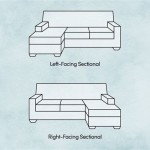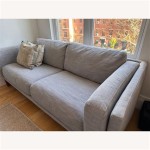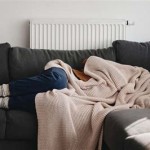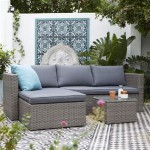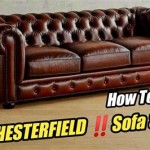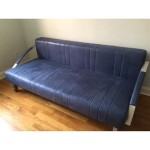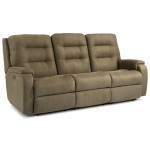The Most Comfortable Mattress Sleeper Sofa: A Comprehensive Guide
Sleeper sofas have evolved significantly from their clunky, uncomfortable predecessors. Modern designs prioritize both style and functionality, offering a viable alternative to traditional guest rooms for accommodating overnight visitors. Central to this evolution is the mattress, the primary determinant of comfort. This article provides a detailed examination of the factors contributing to a comfortable mattress sleeper sofa, exploring the different types of mattresses available, the materials used, and other considerations for selecting the optimal choice.
Understanding Mattress Types for Sleeper Sofas
The type of mattress used in a sleeper sofa significantly impacts its comfort level. Several options are available, each with its own set of advantages and disadvantages.
Innerspring Mattresses: These mattresses utilize a coil system for support. The coils are typically made of steel and are interconnected to provide a degree of firmness. Innerspring mattresses are generally more affordable than other types, making them a popular choice for sleeper sofas. However, they can be less comfortable than other options due to the potential for pressure points and a bouncier feel. The gauge of the coils affects the firmness, with lower gauges indicating a firmer mattress.
The limitations of innerspring mattresses stem from their construction. The interconnected coils can transfer motion, meaning that movement on one side of the mattress can be felt on the other. Furthermore, the lack of substantial padding can lead to discomfort, particularly for side sleepers who require more contouring.
Memory Foam Mattresses: Memory foam, also known as viscoelastic foam, conforms to the body's shape, distributing weight evenly and reducing pressure points. This material is known for its ability to alleviate pain and provide a comfortable sleeping surface. Memory foam mattresses are often preferred for sleeper sofas due to their improved comfort compared to innerspring options.
The density of memory foam is a crucial factor. Higher density foams provide better support and durability but can also trap heat. Lower density foams are more breathable but may not offer the same level of support. Gel-infused memory foam is a popular option, designed to dissipate heat and improve airflow.
Latex Mattresses: Latex is a natural material derived from rubber trees. Latex mattresses offer a balance of comfort, support, and durability. They are naturally hypoallergenic and resistant to dust mites, making them a good choice for individuals with allergies. Latex mattresses also tend to be more breathable than memory foam, helping to regulate body temperature.
Two types of latex are commonly used: Dunlop and Talalay. Dunlop latex is denser and firmer, while Talalay latex is softer and more consistent. Latex mattresses tend to be more expensive than innerspring and memory foam options but offer a longer lifespan and improved comfort.
Hybrid Mattresses: Hybrid mattresses combine features of innerspring and foam mattresses. They typically consist of a coil system for support, topped with layers of memory foam or latex for comfort. Hybrid mattresses aim to provide the best of both worlds, offering the support of innerspring coils and the pressure relief of foam.
The construction of a hybrid mattress can vary widely, with different combinations of coils and foam layers. The specific materials used and their arrangement will influence the overall comfort and feel of the mattress. Hybrid mattresses often come at a higher price point but can be a worthwhile investment for those seeking a balance of support and comfort.
Key Material Considerations for Enhanced Comfort
Beyond the type of mattress, the materials used in its construction play a significant role in determining its comfort level. The cover, the foam layers (if any), and the coil system all contribute to the overall sleeping experience.
Mattress Cover: The mattress cover is the first point of contact and greatly influences breathability and feel. Common materials include cotton, polyester, and blends. Cotton is a natural fiber known for its breathability and softness. Polyester is more durable and resistant to wrinkles. Blends combine the benefits of both materials. Some covers are treated with antimicrobial or hypoallergenic finishes to enhance their appeal.
The weave of the fabric also affects its feel. A tightly woven fabric is smoother and more durable, while a looser weave is more breathable. Some covers incorporate quilting for added comfort and cushioning.
Foam Density and ILD: For memory foam and latex mattresses, density and Indentation Load Deflection (ILD) are crucial factors. Density refers to the weight of the foam per cubic foot. Higher density foams are generally more durable and provide better support. ILD measures the firmness of the foam. Lower ILD values indicate a softer foam, while higher values indicate a firmer foam.
The optimal density and ILD will depend on individual preferences and sleeping styles. Side sleepers typically prefer softer foams with lower ILD values to cushion their shoulders and hips. Back and stomach sleepers generally prefer firmer foams with higher ILD values to maintain spinal alignment.
Coil Gauge and Count: For innerspring and hybrid mattresses, the coil gauge and count are important considerations. Coil gauge refers to the thickness of the steel used to make the coils. Lower gauge numbers indicate thicker, firmer coils. Coil count refers to the number of coils in the mattress. Higher coil counts generally provide better support and reduce motion transfer.
The arrangement of the coils also matters. Pocketed coils, where each coil is individually wrapped in fabric, are more effective at reducing motion transfer than interconnected coils. Pocketed coils allow each coil to move independently, conforming to the body's shape and minimizing disturbance to other sleepers.
Flame Retardants: Mattress manufacturers are required to meet flammability standards. Flame retardants are chemicals added to mattresses to reduce their flammability. However, some flame retardants have been linked to health concerns. Consumers can look for mattresses that use alternative, safer flame retardants, such as silica or wool.
Certifications like CertiPUR-US indicate that the foam used in the mattress is free of harmful chemicals and has been tested for emissions and durability. These certifications can provide assurance that the mattress is safe and meets environmental standards.
Other Factors Affecting Sleeper Sofa Comfort
While the mattress is the primary determinant of comfort, other factors influence the overall sleeping experience on a sleeper sofa.
Sofa Frame and Mechanism: The quality of the sofa frame and the folding mechanism are essential for stability and ease of use. A sturdy frame made of solid wood or metal will provide better support and prevent sagging. The folding mechanism should operate smoothly and easily, without requiring excessive force.
A poorly designed frame or mechanism can lead to discomfort and premature wear and tear. The mechanism should also allow the mattress to lie flat without any gaps or uneven surfaces.
Sofa Dimensions and Space: The dimensions of the sleeper sofa, both when folded and unfolded, are important considerations. The sofa should fit comfortably in the available space and provide ample sleeping area when unfolded. Consider the length and width of the mattress to ensure that it is suitable for the intended users.
Sleeper sofas come in various sizes, from twin to queen. Choose a size that meets the needs of the typical guest while fitting comfortably in the room.
Sofa Style and Aesthetics: While comfort is paramount, the style and aesthetics of the sleeper sofa should also be considered. The sofa should complement the existing decor and reflect personal preferences. Sleeper sofas are available in a wide range of styles, from traditional to modern.
The upholstery fabric should be durable, stain-resistant, and easy to clean. Consider the color and texture of the fabric to ensure that it blends well with the rest of the furniture.
Mattress Thickness: The thickness of the sleeper sofa mattress is often limited by the folding mechanism. Thinner mattresses may be less comfortable than thicker ones, but advancements in foam technology allows even thinner mattresses to provide adequate support. Aim for a mattress thickness of at least 4 inches for reasonable comfort, with thicker mattresses offering greater support and cushioning.
Weight Capacity: Consider the weight capacity of the sleeper sofa. Exceeding the weight limit can damage the frame and mechanism, leading to sagging and discomfort. Check the manufacturer's specifications to ensure that the sofa is suitable for the intended users.

12 Best Sleeper Sofas Sofa Beds And Pullout Couches 2024 The Strategist

11 Best Sleeper Sofas Sofa Beds And Pullout Couches In 2024 Top Picks

The 15 Best Sofa Beds Of 2024

11 Best Sleeper Sofas Sofa Beds And Pullout Couches In 2024 Top Picks

Best Sleeper Sofas 12 Couches Your Guests Won T Mind Sleeping On Time Stamped

The Best Sofa Beds For Sitting And Sleeping

Vesper Sleeper Sofa Design Within Reach Most Comfortable Best

The Best Sleeper Sofa Mattress Has 3 000 5 Star Reviews

The 10 Best Sleeper Sofas Sofa Beds Of 2024 Home Cozy

The Most Comfortable Sleeper Sofas Of 2024 Our Top Picks

